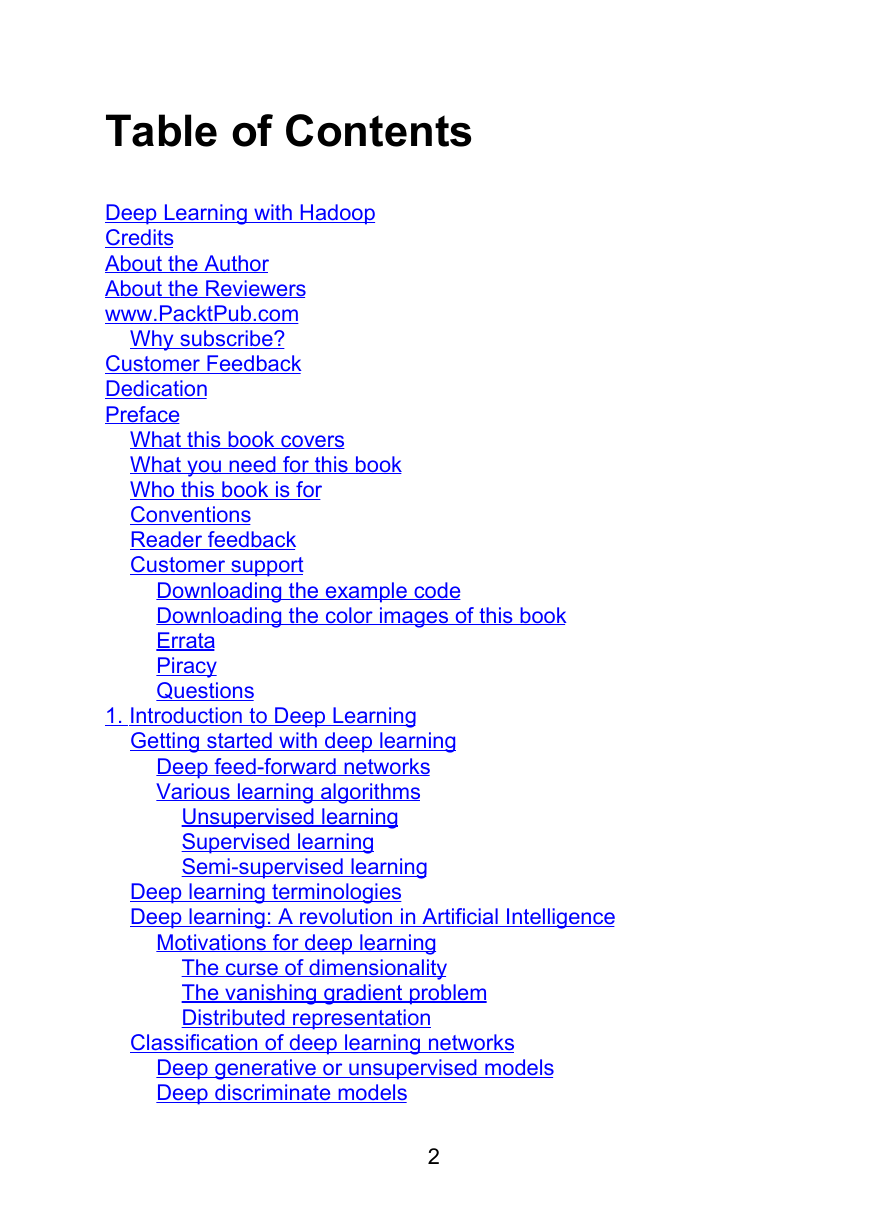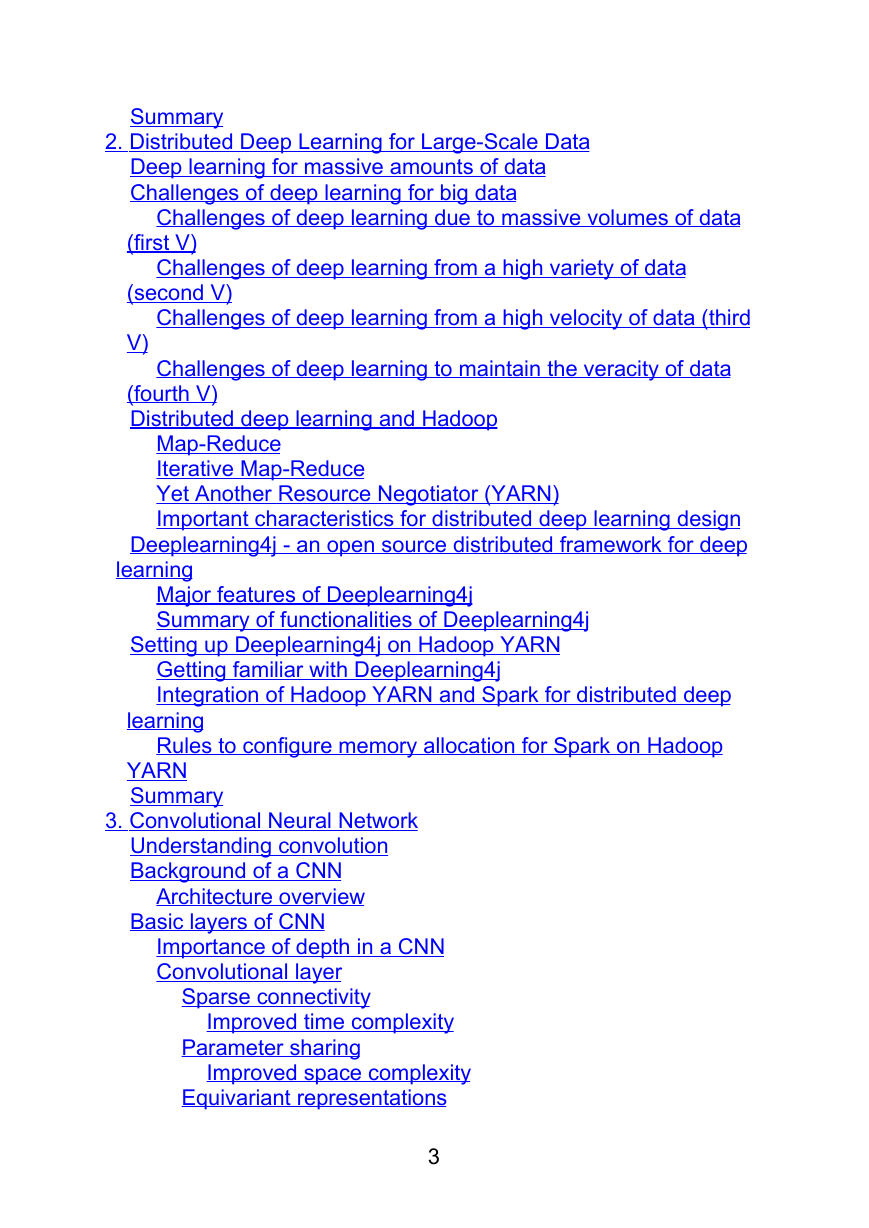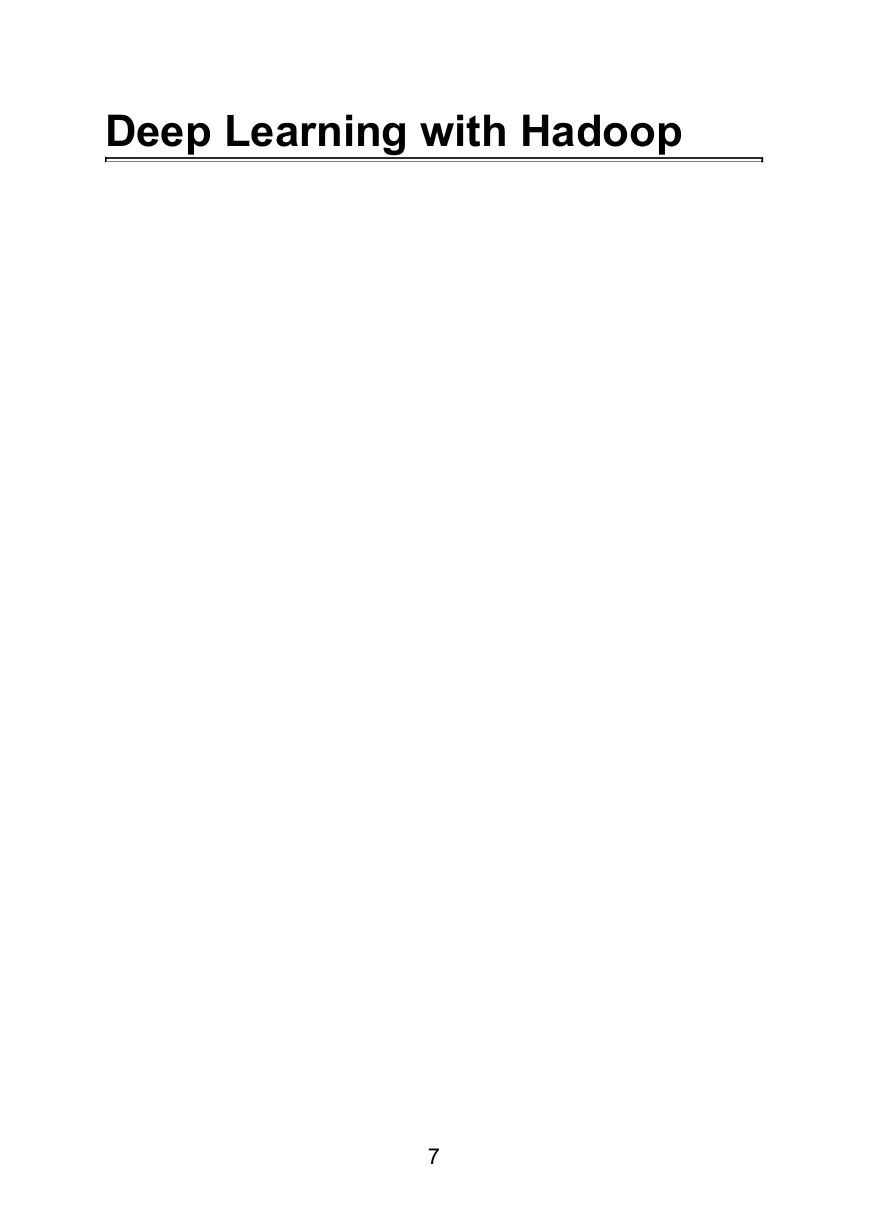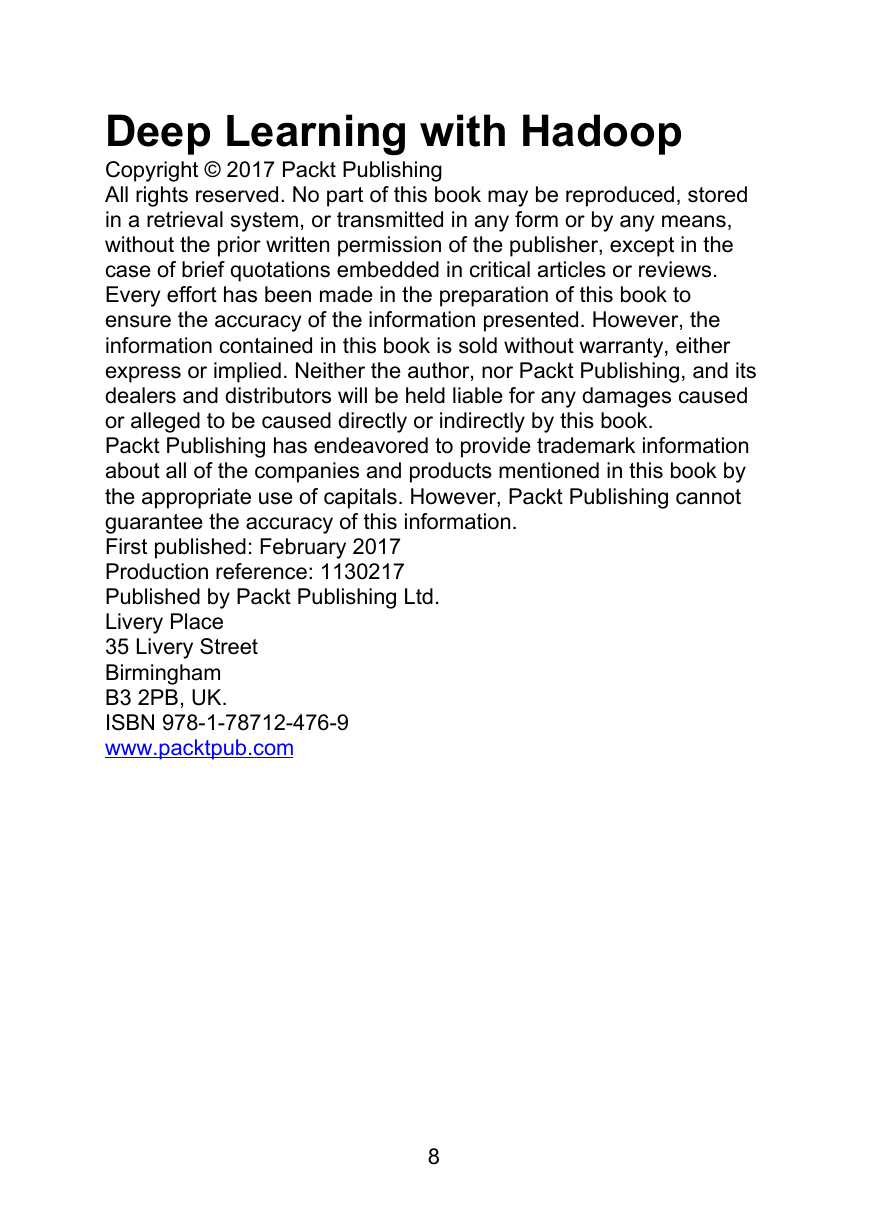Deep Learning with Hadoop
Deep Learning with Hadoop
Credits
About the Author
About the Reviewers
www.PacktPub.com
Why subscribe?
Customer Feedback
Dedication
Preface
What this book covers
What you need for this book
Who this book is for
Conventions
Reader feedback
Customer support
Downloading the example code
Downloading the color images of this book
Errata
Piracy
Questions
1. Introduction to Deep Learning
Getting started with deep learning
Deep feed-forward networks
Various learning algorithms
Unsupervised learning
Supervised learning
Semi-supervised learning
Deep learning terminologies
Deep learning: A revolution in Artificial Intelligence
Motivations for deep learning
The curse of dimensionality
The vanishing gradient problem
Distributed representation
Classification of deep learning networks
Deep generative or unsupervised models
Deep discriminate models
Summary
2. Distributed Deep Learning for Large-Scale Data
Deep learning for massive amounts of data
Challenges of deep learning for big data
Challenges of deep learning due to massive volumes of data (first V)
Challenges of deep learning from a high variety of data (second V)
Challenges of deep learning from a high velocity of data (third V)
Challenges of deep learning to maintain the veracity of data (fourth V)
Distributed deep learning and Hadoop
Map-Reduce
Iterative Map-Reduce
Yet Another Resource Negotiator (YARN)
Important characteristics for distributed deep learning design
Deeplearning4j - an open source distributed framework for deep learning
Major features of Deeplearning4j
Summary of functionalities of Deeplearning4j
Setting up Deeplearning4j on Hadoop YARN
Getting familiar with Deeplearning4j
Integration of Hadoop YARN and Spark for distributed deep learning
Rules to configure memory allocation for Spark on Hadoop YARN
Summary
3. Convolutional Neural Network
Understanding convolution
Background of a CNN
Architecture overview
Basic layers of CNN
Importance of depth in a CNN
Convolutional layer
Sparse connectivity
Improved time complexity
Parameter sharing
Improved space complexity
Equivariant representations
Choosing the hyperparameters for Convolutional layers
Depth
Stride
Zero-padding
Mathematical formulation of hyperparameters
Effect of zero-padding
ReLU (Rectified Linear Units) layers
Advantages of ReLU over the sigmoid function
Pooling layer
Where is it useful, and where is it not?
Fully connected layer
Distributed deep CNN
Most popular aggressive deep neural networks and their configurations
Training time - major challenges associated with deep neural networks
Hadoop for deep CNNs
Convolutional layer using Deeplearning4j
Loading data
Model configuration
Training and evaluation
Summary
4. Recurrent Neural Network
What makes recurrent networks distinctive from others?
Recurrent neural networks(RNNs)
Unfolding recurrent computations
Advantages of a model unfolded in time
Memory of RNNs
Architecture
Backpropagation through time (BPTT)
Error computation
Long short-term memory
Problem with deep backpropagation with time
Long short-term memory
Bi-directional RNNs
Shortfalls of RNNs
Solutions to overcome
Distributed deep RNNs
RNNs with Deeplearning4j
Summary
5. Restricted Boltzmann Machines
Energy-based models
Boltzmann machines
How Boltzmann machines learn
Shortfall
Restricted Boltzmann machine
The basic architecture
How RBMs work
Convolutional Restricted Boltzmann machines
Stacked Convolutional Restricted Boltzmann machines
Deep Belief networks
Greedy layer-wise training
Distributed Deep Belief network
Distributed training of Restricted Boltzmann machines
Distributed training of Deep Belief networks
Distributed back propagation algorithm
Performance evaluation of RBMs and DBNs
Drastic improvement in training time
Implementation using Deeplearning4j
Restricted Boltzmann machines
Deep Belief networks
Summary
6. Autoencoders
Autoencoder
Regularized autoencoders
Sparse autoencoders
Sparse coding
Sparse autoencoders
The k-Sparse autoencoder
How to select the sparsity level k
Effect of sparsity level
Deep autoencoders
Training of deep autoencoders
Implementation of deep autoencoders using Deeplearning4j
Denoising autoencoder
Architecture of a Denoising autoencoder
Stacked denoising autoencoders
Implementation of a stacked denoising autoencoder using Deeplearning4j
Applications of autoencoders
Summary
7. Miscellaneous Deep Learning Operations using Hadoop
Distributed video decoding in Hadoop
Large-scale image processing using Hadoop
Application of Map-Reduce jobs
Natural language processing using Hadoop
Web crawler
Extraction of keyword and module for natural language processing
Estimation of relevant keywords from a page
Summary
1. References
















 2023年江西萍乡中考道德与法治真题及答案.doc
2023年江西萍乡中考道德与法治真题及答案.doc 2012年重庆南川中考生物真题及答案.doc
2012年重庆南川中考生物真题及答案.doc 2013年江西师范大学地理学综合及文艺理论基础考研真题.doc
2013年江西师范大学地理学综合及文艺理论基础考研真题.doc 2020年四川甘孜小升初语文真题及答案I卷.doc
2020年四川甘孜小升初语文真题及答案I卷.doc 2020年注册岩土工程师专业基础考试真题及答案.doc
2020年注册岩土工程师专业基础考试真题及答案.doc 2023-2024学年福建省厦门市九年级上学期数学月考试题及答案.doc
2023-2024学年福建省厦门市九年级上学期数学月考试题及答案.doc 2021-2022学年辽宁省沈阳市大东区九年级上学期语文期末试题及答案.doc
2021-2022学年辽宁省沈阳市大东区九年级上学期语文期末试题及答案.doc 2022-2023学年北京东城区初三第一学期物理期末试卷及答案.doc
2022-2023学年北京东城区初三第一学期物理期末试卷及答案.doc 2018上半年江西教师资格初中地理学科知识与教学能力真题及答案.doc
2018上半年江西教师资格初中地理学科知识与教学能力真题及答案.doc 2012年河北国家公务员申论考试真题及答案-省级.doc
2012年河北国家公务员申论考试真题及答案-省级.doc 2020-2021学年江苏省扬州市江都区邵樊片九年级上学期数学第一次质量检测试题及答案.doc
2020-2021学年江苏省扬州市江都区邵樊片九年级上学期数学第一次质量检测试题及答案.doc 2022下半年黑龙江教师资格证中学综合素质真题及答案.doc
2022下半年黑龙江教师资格证中学综合素质真题及答案.doc